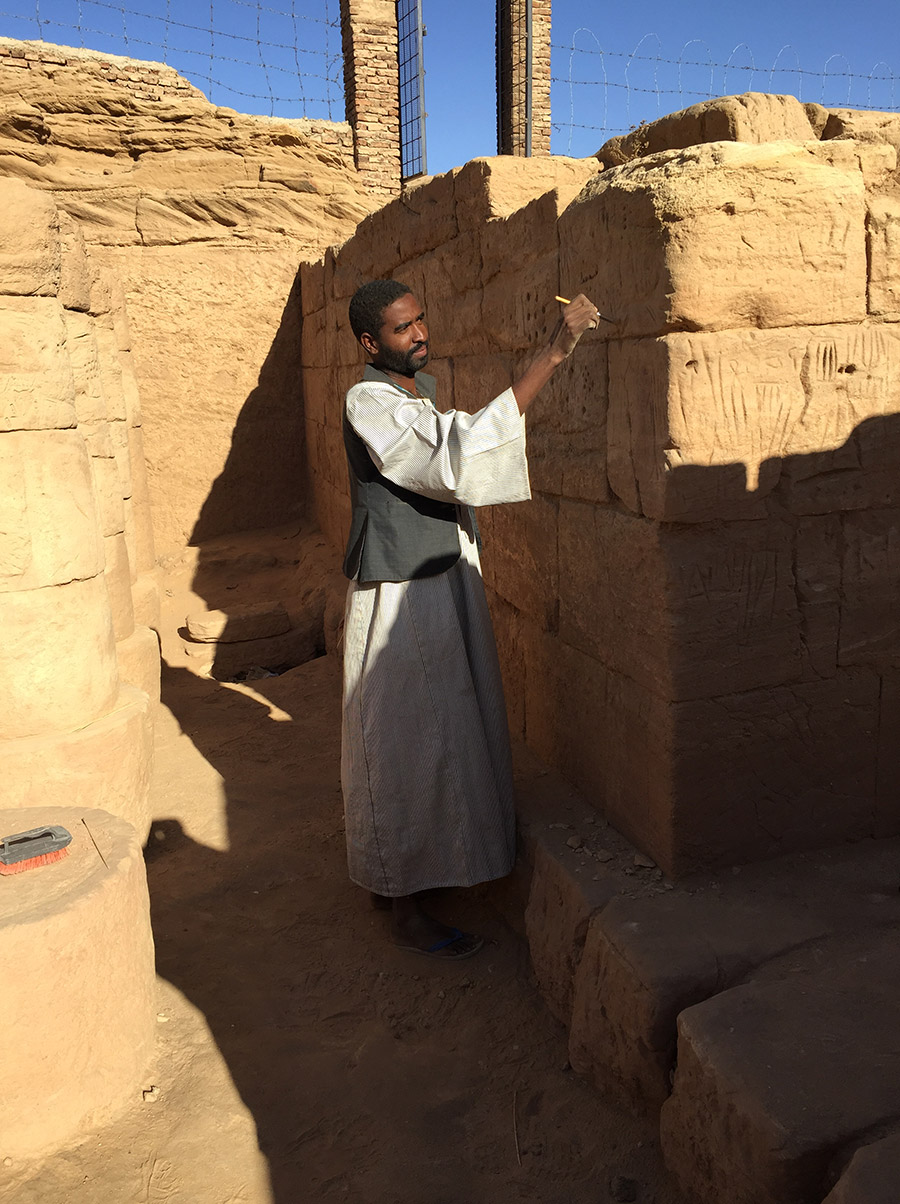Conservation and Documentation of the El-Kurru Graffiti

All the graffiti at El-Kurru are carved into soft sandstone that cracks and erodes when exposed to wind and rain. As the surface of the stone weathers, the graffiti can disappear.
In 2016 the Kelsey team began a project to conserve and document the graffiti. The project has three main components: a condition survey to monitor the graffiti’s preservation, conservation treatment to slow down damage, and photography to record the graffiti for the future.
The condition survey is carried out every year. Conservators look at each graffito and assess any cracks or other problems. Sometimes this annual check-up reveals that conservation treatment is needed.
The most common form of treatment is to seal cracks by filling them with grout. At El-Kurru, we use a grout made from lime and sand mixed with water. When it sets, the grout seals the crack so that water cannot get inside, and it helps hold cracked sections of stone in place.
The graffiti are surprisingly difficult to photograph. Many are worn and hard to see, and they look different at different times of the day. Some graffiti appear alone, but others are part of larger groups, and it can be hard to tell where one design stops and another begins. Because it is often unclear what a graffito is supposed to represent, it can be challenging to determine the best angle for a photograph. To help address some of these issues, our photography has included a special technique called reflectance transformation imaging, or RTI.

